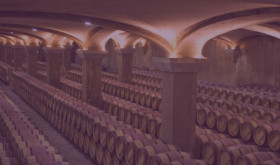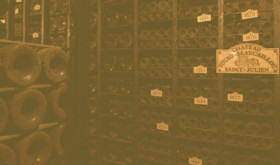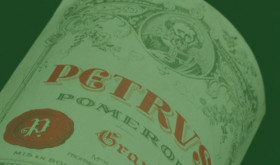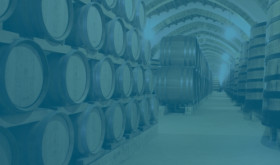
The following article is an extract from our Burgundy regional wine investment report.
- Burgundy is the region with the highest average bottle prices.
- It is the best-performing fine wine region, considerably outperforming industry benchmarks.
- This article analyses its historic performance, the drivers behind its success, and what this might meant for the future of the region.
Burgundy has earned an impressive reputation in the fine wine investment landscape. The region is the outright leader when it comes to average bottle prices and the long-term performance of its wines.
The Burgundy 150 index, which tracks the prices of the last ten vintages across 15 Burgundy brands, is the leading Liv-ex regional index, continually outperforming Bordeaux, Italy and Champagne. It is up over 650% since its inception.
Although the index only comprises a narrow pool of highly traded wines, it provides an indication of the direction of Burgundy prices. During its impressive rise, the index experienced only one significant drop of 15%, giving investors confidence that its punctuated equilibrium will continue.
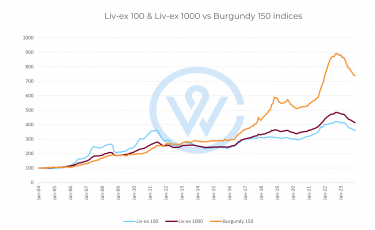
Historic performance of Burgundy prices
The Liv-ex Burgundy 150 index doubled from early 2006 to mid/late 2008 — the first awakening of the Burgundy market as a new generation of wealthy consumers started to dominate the collectors’ market. This was at least in part driven by the volume of information available to them online from reviewers like Robert Parker and Allen Meadows and a greater focus on fine wine from the major auction houses.
After the 2008 financial crisis, Burgundy was somewhat left in the shadow. With the opening of the Chinese market, Bordeaux grew massively between 2008 and 2011. When Bordeaux fell from its 2011 peak, a new generation of investors flocked to Burgundy, seeking growth and breadth to their holdings.
From 2016 to late-2018, the value of the Burgundy 150 index doubled again. This can be attributed to growing liquidity in the sector and its recognition as a viable high-return investment. The region experienced a period of decline in 2019/2020, after a 15-year period without any significant downward movements. Some of this retreat has been related to profit taking and, later on, to the Covid-19 pandemic. Burgundy quickly made up for lost time in 2021 and 2022, with factors such as increased at-home consumption of fine wine, growing online trade, and rising liquidity contributing to its success. The index hit an all-time high in October 2022 at 909.4.
The market at large experienced another period of contraction in 2023, due to a combination of macroeconomic factors such as geopolitical conflicts, the lasting effects of the pandemic, high inflation and rising interest rates. Burgundy was the hardest hit region.
However, the overall direction of prices remains upwards as the trendline in the chart below shows. Such periods are advantageous times for Burgundy buyers who are usually able to find more stock at lower prices.
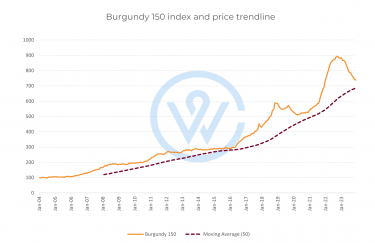
To find out more about the investment market for Burgundy wines, read the full report here.

